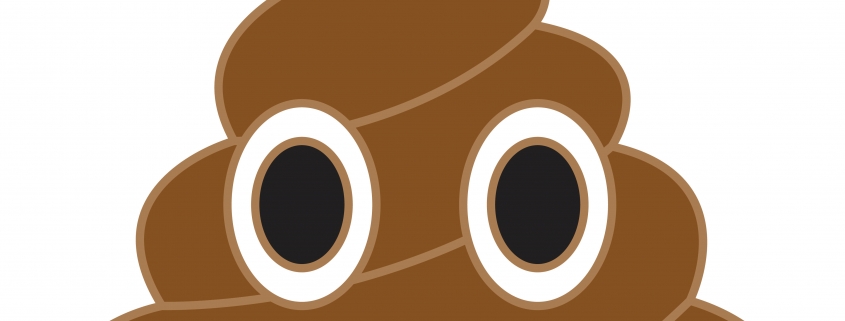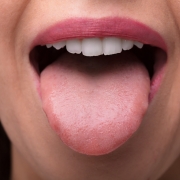Fecal Fundamentals: Learn What Your Poop Says About Your Health
The first part of the digestive story receives the most fawning attention. Everyone likes a beginning, and eating is a winning topic. The grinding, churning breakdown of digestion makes for an industrial middle section. Then there’s the end. “Waste is expelled.”
But everyone is a digestive magician whose failsafe trick is turning delicious food into poop. It’s normal. It’s essential. And it’s time the finale of the digestive story had its moment—it’s time to talk about what your poop means and what your poop says about your health.
Don’t cower from this poop talk or think yourself uncouth for your interest in the topic. Don’t hold it against yourself or scold your inner child for giggling. By the end, you’ll see that poop is important—if a little gross—to consider and discuss. You can handle the types of stool and what poop color means.
Poop can be a funny word, an uncivilized topic, and a key to understanding your health—all at once.
Look to the Large Intestine for Keys to Understanding What Your Poop Means
Poop is formed from the solid parts of food your body can’t absorb or use in another way. It’s purely waste—the scatological leftovers—collected and compressed in your large intestine.
And your colon is a great starting place for this indelicate discussion. That’s because various stool types and what your poop says about your health begins in the large intestine. Many of the factors broken down below have their origins here.
Before proceeding further, let’s explore a bit more about what makes up your poop. No matter the consistency, poop contains a lot of water—approximately 75 percent. You’ll also find undigested matter, which mainly means fiber. Stool also contains:
- live and dead bacteria
- intestinal mucus
- proteins and fats
- salts
- a variety of other cells and discarded cell parts
This mashup of your body’s trash collects in your large intestine. It solidifies the longer the mixture stays here because water is absorbed through the large intestine.
When it’s time to go, your defecation reflex starts. The literal movement of your bowels is driven by peristalsis. These muscle contractions in the rectum, like those along the digestive conveyor belt, initiate the final act of digestion.
During your follow-up work in the bathroom, a lot of questions can pop up. The biggest one seems to be, “Is that normal?” People don’t regularly—no pun intended—talk about what their usual stool is like, so comparison is hard to come by.
That being said, you can look at the characteristics below and better understand what your poop means. The information you’ll receive from your own quick stool study won’t be medical quality, but it can begin to illuminate what your poop says about your health.
What Stool Color Means
The color palate of your poop should exist in shades of brown. The exact variations and hues are determined mostly by the raw materials of your diet.
The leftovers will look a lot like what you ate, so the exact color can change day by day. More leafy greens one day will add a touch of green. Beets can produce a shocking red. But brown remains dominant because that’s the color of used up digestive enzymes, bile, and bilirubin.
Divergences in poop color that are unexplained by your diet may be signals from your body. Here’s an explanation for what stool color means:
- Black: Some iron supplements and copious amounts of black licorice could be the culprit. Outside of those explanations, black poop is a serious matter to bring to your doctor’s attention. It can mean bleeding is happening in your upper intestinal tract.
- Red: Your first thought is blood. And, in the absence of red foods, you’re probably right. But, unlike black poop, the bleeding is happening later in the process—in the large intestine or rectum.
- Really Green: If you skipped the spinach and still have very green poop, the issue lies with bile. Your body hasn’t had time to fully utilize and dismantle the bile before your bathroom break. That suggests your food’s cruise down the digestive highway is happening at higher-than-normal speeds.
- Grey/White: Green means too much bile leftover, and grey or white is the opposite. This coloration may mean inadequate bile supplies earlier in the digestive process. Talk to your doctor about reasons this may be consistently happening.
- Yellow: Fat is typically at fault for yellow-colored poop. If this is a persistent problem, you can talk to a health-care professional about potential absorption issues.
Fecal Firmness and Texture Tell You a Lot
You can feel when something is off about the firmness and texture of your poop.
Ideally, your stool is smooth, firm, soft—but not too soft—and passes without issue. Think of this as the center of a continuum. The further your feces strays from that middle point in either direction, the less healthy it is.
Moving left and away from the center, the stool types grow increasingly lumpy and firm. Some lumpiness is OK. The far-left side of the spectrum is poop that’s like hard, little, problematic pebbles.
The opposite is true for the far-right side of the stool spectrum. The further you go, the softer it becomes—ultimately hitting diarrhea at the extreme right end. A little softness in the stool is still accepted as healthy, but once you start seeing cloud-like pieces with ragged edges, you may be on the way to diarrhea.
There’s a lot of space between pebbly feces and a smooth stool, as well as diarrhea and the perfectly formed poop. Your bowel movements can and will slide along the spectrum depending on your diet and daily blips in digestive health.
Time spent in the colon is responsible for a lot of differences in texture and firmness. Poop hardens up when it spends too much time there, but it gets softer the faster it moves through.
This speed can tell you a bit about what’s going on in your digestive health. Hard, pebble-like stool signals constipation and might also be a sign of dehydration or a lack of fiber. On the other side, diarrhea is your body’s way of quickly ridding itself of unwanted items. Those can include bacteria, viruses, and foods it doesn’t easily tolerate.
Bigger digestive issues can be tied to the extremes of the stool spectrum. If issues persist, consult with your health-care provider.
Judging Your Bowel Movement’s Buoyancy
Unlike color or texture, buoyancy is simple, with no spectrums or charts. There are only two options—sink or float.
You want your poop to sink in the toilet bowl. That’s a sign of good density. It also means your stool doesn’t contain too much fat.
If your poop floats, you may consider cutting back on fat in your diet. Consistent floating issues after a dietary change might mean your body is having trouble absorbing fat—another point of discussion with your doctor.
What Your Poop Says About Your Health if There are Visible Food Particles
Don’t worry too much if you can identify some of the fibrous parts of your diet in your poop. Fiber isn’t able to be digested fully, and the insoluble sort may not change much on the digestive journey.
You can help your guts out by chewing your food better to give digestion an adequate head start. Breaking up fiber-rich vegetables in your mouth won’t make the indigestible parts break down fully. But it will at least make the end of the process less alarming.
Your Last Two Poop Properties to Consider: Size and Smell
No two poops are the same in size. If you eat more, you’ll poop a bit more—whether more frequently or in larger quantities.
It’s normal to poop up to three times a day and as infrequently as every couple of days. And your round, smooth-but-solid stools are ideally a few inches (several centimeters) each. The small, hard pebbles aren’t what you want. But if it’s a bit bigger, that’s not problematic in and of itself—especially if it was easy to pass.
Then there’s smell.
If your poop actually smells like flowers, that would be more abnormal than a bit of unpleasant odor. Poop stinks. And that’s because bacterial breakdown of food is a smelly business. But if the odor is often extremely pungent—to the point where you can’t stand it—you may want to check with your doctor about a potential infection or digestive issue.
A Few Words About Urine
While body waste is at the top of your mind, you might also wonder about urine. It’s another way your body is emptying the garbage. You can learn something about your health from your urine, too.
Pee color is often the first and best signal for hydration status. Properly hydrated people have pale, straw-colored urine. The darker the shade of yellow, the more water you need to start drinking.
Some vitamins may also impact the color of urine, turning it a brighter, more golden color. Medications and food coloration (including natural pigments or synthetic dyes) can make your urine blue, green, or brown. Red or pink urine could also be food related, but blood is often to blame. See your doctor if bloody urine persists outside of dietary factors.
Your pee can also smell different, depending on the balance of waste products and water in urine. If you haven’t eaten asparagus and your pee consistently and persistently smells strong and odd, it might warrant a conversation with a health-care professional.
Don’t Waste an Opportunity to Keep an Eye on Your Health
People’s trash tells interesting stories. You can learn a lot. Poop is your body taking out the garbage, and there’s much to glean from the types of stool you have. So stop shortchanging the end of the digestive story and pay a bit more attention to what your poop says about your health and your lifestyle.
But it’s easy to overreact to a peculiar poop. Your strange stool might have you rushing to the internet to dabble in self-diagnosis. Don’t do it.
What your poop says about your health is worth paying attention to. But clear signals tend to bear out in the long-term more than on a single occurrence. You should immediately address bleeding or black stool, and quickly deal with diarrhea or constipation. Other indications about what your poop means may change as quickly as the calendar flips from day to day, though.
If you’re looking for positive poop interventions, start with your diet and lifestyle. Changes in diet can upend your fecal expectations. Switching to a higher-fiber diet will make an impact you’ll see in the toilet bowl quickly. Same goes for lowering your fat intake. Other lifestyle tweaks to form more perfect poops include healthy hydration, regular exercise, and supporting a balanced microbiome.
References
https://www.webmd.com/digestive-disorders/ss/slideshow-poop-type-color
https://www.healthline.com/health/digestive-health/types-of-poop
https://www.medicalnewstoday.com/articles/320938
https://www.pennmedicine.org/updates/blogs/health-and-wellness/2019/march/poop
https://www.piedmont.org/living-better/what-your-stool-says-about-your-health
https://www.umassmemorialhealthcare.org/sites/umass-memorial-hospital/files/Documents/Services/Surgery/UMass_Colorectal_Inforgraphic_0316.pdf
https://www.mayoclinic.org/stool-color/expert-answers/faq-20058080
https://www.hopkinsmedicine.org/health/wellness-and-prevention/5-things-your-poop-can-tell-you-about-your-health
https://www.webmd.com/digestive-disorders/poop-chart-bristol-stool-scale
https://www.everydayhealth.com/digestive-health-pictures/icky-but-interesting-facts-about-poop.aspx
https://www.healthline.com/health/undigested-food-in-stool#causes
https://www.mayoclinic.org/diseases-conditions/urine-color/symptoms-causes/syc-20367333
https://www.mayoclinic.org/symptoms/urine-odor/basics/causes/sym-20050704















